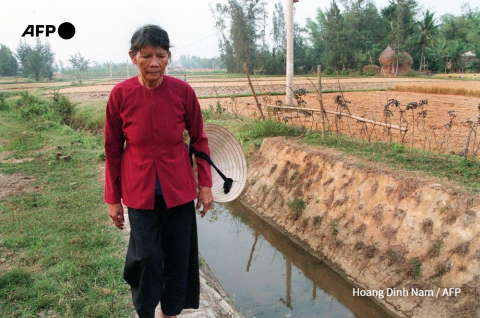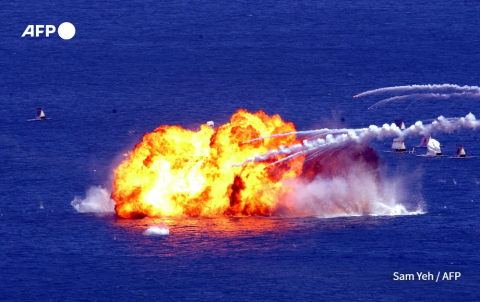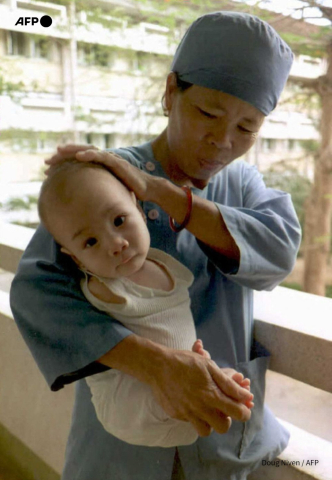US war crimes and weapons in Vietnam

US forces in Vietnam committed war crimes and employed weapons that have since been banned by the United Nations and by the United States itself. Here are three prime examples:
- My Lai massacre -
The most widely known atrocity committed by US soldiers occurred on March 16, 1968 at the village of My Lai in the northern part of what was then South Vietnam.
Troops sent on a "search and destroy" mission against Vietcong guerrillas slaughtered as many as 504 civilians in three hours, raped women and mutilated bodies in My Lai and a neighbouring hamlet, Son My.
The most widely known atrocity committed by US soldiers occurred on March 16, 1968 at the village of My Lai in the northern part of what was then South Vietnam.
Some victims were lined up in a drainage ditch and then executed.
The only soldier convicted in the massacre was Lieutenant William Calley of C Company, 1st Battalion, 20th Infantry, 11th Light Infantry Brigade, who was charged with 109 murders and convicted of killing 22 people.
At his trial, Calley said: "I was ordered to go in there and destroy the enemy ... That was my job on that day. That was the mission I was given."
Then president Richard Nixon reduced Calley's life sentence to three years under house arrest and he was freed in 1974.
Colonel William Wilson, who was ordered to investigate the massacre, was quoted as saying: "I had prayed to God that this thing was fiction."
The crime was covered up by senior officers and exposed only a year later by Ron Ridenhour, a helicopter gunner who had heard about it from several members of C Company and who wrote to congressional and military officials.
Another helicopter crew of pilot Hugh Thompson, gunner Lawrence Colburn and Larry Andreotta are credited with rescuing 12 people by using their chopper as a shield.
At a ceremony to commemorate the massacre 30 years later, Thompson fought back tears and said: "Something horrible happened, I'm sorry it happened and I can't explain why it happened.
"I just wish that our crew that day could have helped more people than we did."

- Napalm -
The enduring symbol of horrific weapons used in Vietnam, napalm had two original components, naphthenic and palmitic acids, hence the name.
Invented by a Harvard University chemist during World War II, it is a form of thickened petroleum that sets fire to targets.
It reportedly killed more people in Tokyo -- 87,500 on the night of March 9-10 1945 -- than either of the atomic explosions.
Napalm's last known use by the United States was in Iraq in 2003.
One of the best-known pictures of the Vietnam War was taken on June 8, 1972 by Nick Ut of a nine-year-old girl named Phan Thi Kim Phuc as she ran naked after a napalm attack by a South Vietnamese plane.
She suffered burns to more than two-thirds of her body and spent 14 months being treated. But she survived and created a foundation to help child victims of war.
On his first full day in office in 2009, US President Barack Obama signed a 1980 UN protocol that bans the use of napalm against concentrations of civilians.
The United States nonetheless reserves the right to use napalm if doing so would save civilian lives.

- Agent Orange -
This is the code name for a herbicide developed to deprive enemy forces of cover from trees and shrubs and kill crops that they could use for food.
Used by the United States between 1965 and 1971, officials in Hanoi say that up to three million Vietnamese were exposed to the toxic mix of chemicals including dioxin that was combined with diesel fuel or kerosene and dispersed mainly by aircraft.
An estimated 19 million gallons of it was used in South Vietnam and officials say one million people suffer from serious health effects today as a result, including at least 150,000 children born with birth defects, figures also cited by the Red Cross.
According to the Aspen Institute, five million acres of forest and about 500,000 acres of crops were destroyed in southern Vietnam, an area about the size of the state of Massachusetts.
The United States banned the use of Agent Orange in 1971. Victims tried to obtain compensation but in 2009 the US Supreme Court declined to consider their case.
